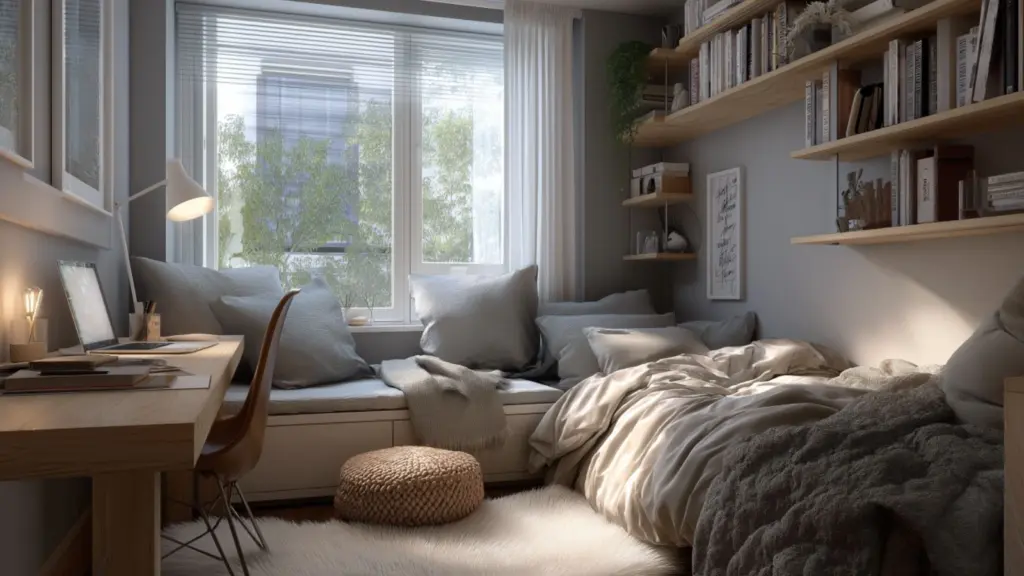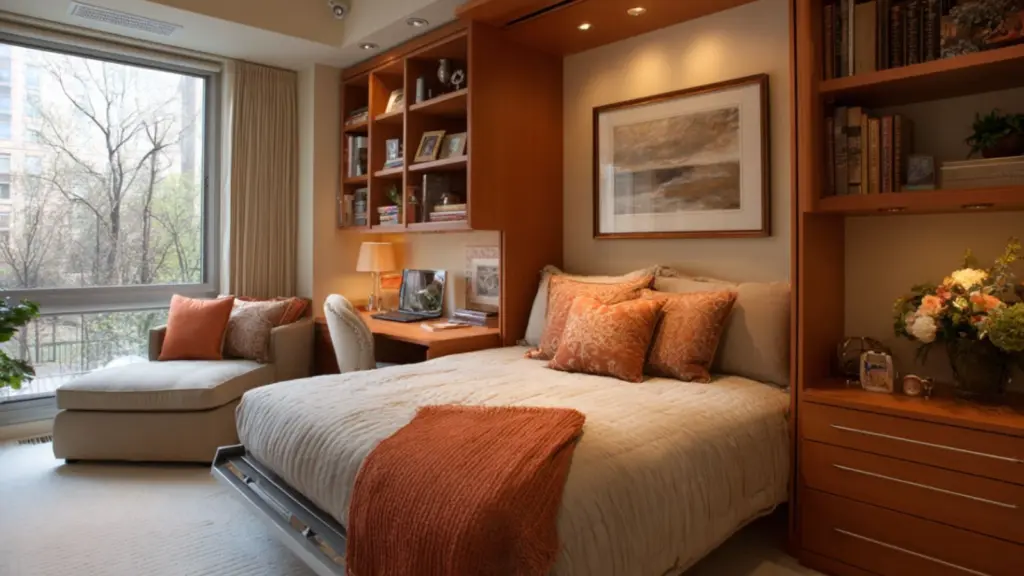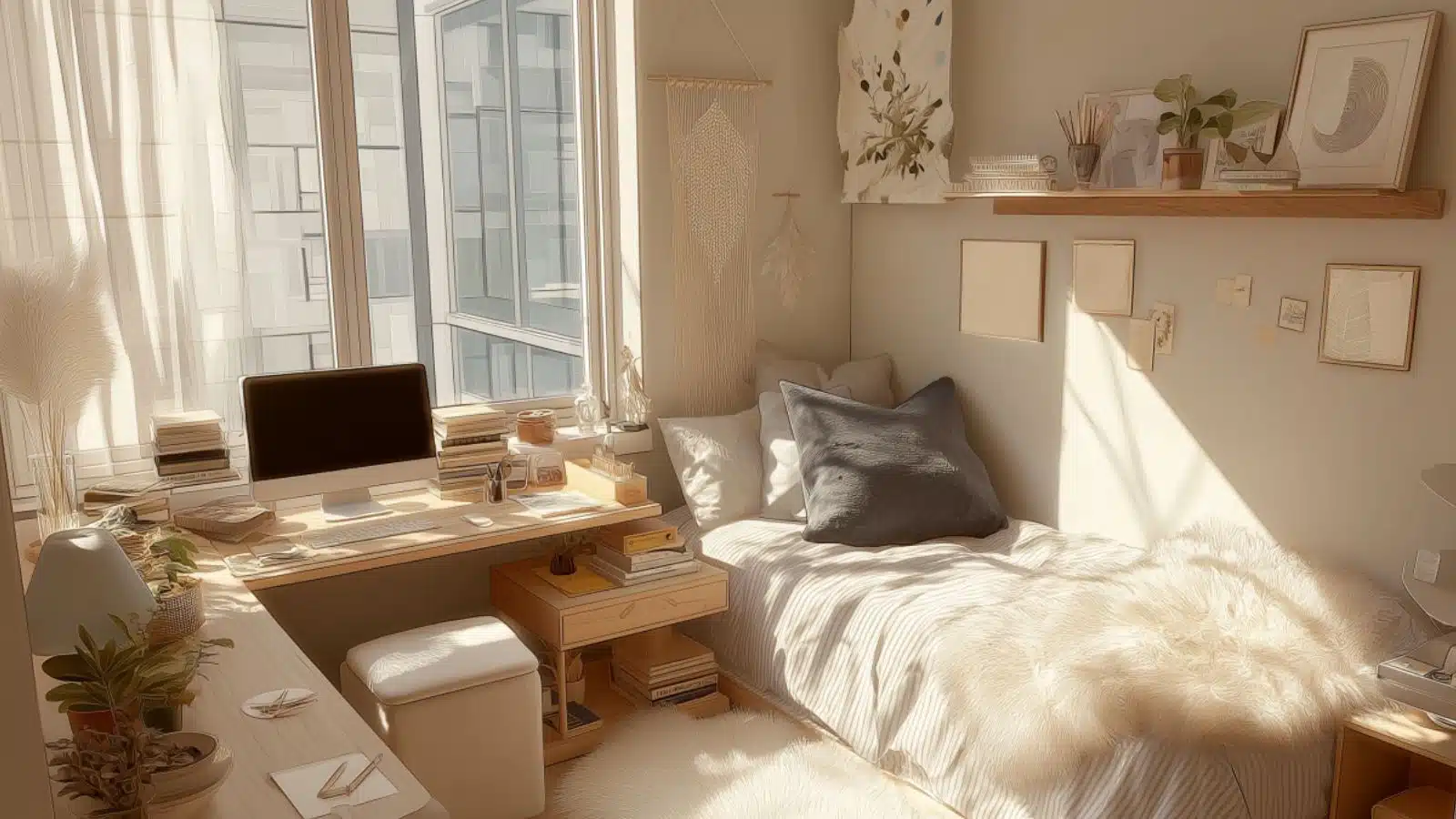Smart Tiny Bedroom Design Layouts for Multifunctional Rooms That Maximize Every Inch
Table of Contents
Tiny bedrooms can feel like a design challenge—but with the right layout and intention, they can become stylish, multifunctional sanctuaries that pack a serious punch. Whether you’re working with a studio apartment, a guest room doubling as an office, or a child’s room with multiple needs, smart design can completely transform a cramped space into a beautifully efficient one.
According to the U.S. Census Bureau, over 30% of Americans live in homes under 1,500 square feet. That means multifunctionality isn’t just a trend—it’s a necessity. And as remote work, urban living, and minimalist lifestyles continue to rise, the ability to do more with less is becoming an essential design skill.
This article will walk you through strategic layout ideas and design techniques to make the most of your tiny bedroom. We’ll explore solutions for combining sleep, work, storage, and relaxation—all in one compact space. From built-in furniture and vertical storage to foldaway desks and modular beds, you’ll discover how to craft a multifunctional room without compromising on comfort or style.
Let’s dive into the smart layouts and styling tips that help small bedrooms live large.
Zone-Based Layout Planning for Multifunctionality

One of the smartest ways to design a multifunctional small bedroom is to define separate “zones” within the space. Zoning allows your room to perform multiple roles—sleeping, working, relaxing—without feeling chaotic or overcrowded.
Start by visualizing your needs. Do you require a work-from-home setup? A reading corner? Extra storage? Once you have clarity, divide the room either visually or physically. Use area rugs, lighting, or furniture placement to delineate zones. In a small space, even a slight change in flooring or wall decor can create the illusion of separation.
Keep pathways clear and scale furniture appropriately. Choose dual-purpose pieces that work across zones, such as a nightstand that also serves as a mini desk or a daybed that transforms from a sofa to a sleeping area.
Table: Layout Zoning Guide
| Zone Type | Common Furniture | Ideal Additions | Design Tips |
|---|---|---|---|
| Sleeping | Bed, nightstand | Sconces, curtains | Keep it calm and clutter-free |
| Working | Desk, chair | Task lamp, shelves | Opt for wall-mounted designs |
| Relaxation | Lounge chair, ottoman | Throw blanket, small shelf | Add soft lighting |
| Storage | Dresser, bins | Underbed boxes, vertical units | Use unused wall or floor space |
Maximizing Vertical Space with Built-In Storage
In small bedrooms, floor space is limited—so vertical design becomes your best friend. Smart vertical storage turns unused walls into functional assets, from built-in shelving to overhead compartments and tall wardrobes.
Start by installing shelves above the bed or around door frames. These high-mounted units are ideal for seasonal items or decor you don’t need to access daily. Floor-to-ceiling closets or armoires make use of every available inch and eliminate the need for bulky dressers.
Don’t overlook hanging organizers and pegboards, which add flexibility and a bit of DIY charm. Even your bed can contribute to vertical storage—opt for designs with tall headboards featuring built-in compartments.
Table: Vertical Storage Solutions
| Storage Type | Ideal Placement | Function |
|---|---|---|
| Floating Shelves | Above bed, desk, doorway | Display or light storage |
| Floor-to-Ceiling Units | Along walls or corners | Max storage in minimal space |
| Overhead Cabinets | Above closets or entryways | Seasonal and hidden storage |
| Pegboards/Hooks | Walls, back of doors | Modular storage for daily items |
Expanding a Room’s Function with Convertible Furniture

In tiny bedrooms, furniture must work overtime. This is where convertible and modular furniture designs shine—think Murphy beds, sleeper sofas, fold-down desks, and nesting tables.
For instance, a wall bed (Murphy bed) folds up during the day, revealing a desk or shelving unit underneath. A loft bed frees up floor space below for a desk, seating area, or even a mini closet. Extendable or nesting furniture offers flexibility for different activities without needing more square footage.
Multifunctional furniture not only saves space but also keeps the room dynamic. You can shift layouts as needed, adapting the room to your lifestyle, whether it’s workday focus or weekend relaxation.
Table: Best Convertible Furniture for Tiny Rooms
| Furniture Type | Use Case | Bonus Feature |
|---|---|---|
| Murphy Bed | Guest room, studio apartment | Built-in shelves or desk |
| Loft Bed | Teen rooms, small primary rooms | Under-bed desk or seating area |
| Fold-Down Desk | Work-from-home solutions | Tucks away after hours |
| Ottoman with Storage | Extra seating or footrest | Hidden compartment inside |
Stylish Underbed Storage That Actually Works
The space beneath your bed is prime real estate—yet it’s often overlooked or underutilized. In a tiny bedroom, underbed storage can be a game-changer, allowing you to free up closet and floor space while keeping things tidy.
Start by choosing a bed with built-in drawers or lift-up mattress bases. These designs are perfect for storing off-season clothes, linens, or even books and documents. If you’re using a standard frame, opt for rolling bins or baskets that are easy to access and fit neatly under.
To keep things stylish, match the containers to your room’s aesthetic. Use woven baskets for a cozy, natural look, or sleek fabric bins for a more minimalist design. Label everything clearly so you don’t have to dig around to find what you need.
You can even divide underbed storage into zones—linens in one bin, accessories in another, and so on. By maintaining a consistent system, your bedroom stays clutter-free while maximizing every inch.
Table: Smart Underbed Storage Ideas
| Storage Type | Best For | Aesthetic Tip |
|---|---|---|
| Drawer Bed Base | Clothes, extra pillows | Choose wood tones to match décor |
| Rolling Bins | Shoes, bags, daily items | Opt for uniform styles and sizes |
| Woven Baskets | Blankets, books, towels | Adds texture and warmth |
| Vacuum-Seal Bags | Seasonal clothing | Stack in low-profile containers |
Choosing a Color Palette and Lighting That Opens Up the Space
Color and lighting are powerful tools when designing tiny bedrooms. Light tones make spaces feel airy and expansive, while well-placed lighting adds warmth and clarity without sacrificing square footage.
Choose a base palette of soft neutrals—think ivory, pale gray, or muted taupe—and pair with pops of calming hues like sage green or dusty blue. These tones reflect light well and maintain a cohesive, soothing environment.
Lighting should be layered. Use wall-mounted sconces instead of bulky table lamps to free up surface space. Consider LED strip lighting under shelves or behind headboards for ambiance. Natural light is always best—maximize it with sheer curtains or reflective mirrors.
Table: Color and Lighting Design Tips
| Element | Design Tip | Visual Impact |
|---|---|---|
| Base Color Palette | Soft neutrals with cool accents | Creates an open, tranquil feel |
| Accent Colors | Sage, blush, navy | Adds interest without clutter |
| Wall Sconces | Replace bedside lamps | Saves surface space and adds glow |
| Ambient Lighting | Use warm-toned LEDs | Enhances coziness and mood |
Creating a Combined Sleep and Work Space That Actually Works
With remote work now a long-term reality for many, combining sleep and work in a small bedroom has become more common—and more challenging. The key to success is clear separation, even within one space.
Begin with smart furniture choices. A wall-mounted desk that folds up when not in use is ideal. Pair it with a lightweight ergonomic chair that can tuck away easily. Place the workstation near natural light if possible, away from the bed to create mental separation.
Next, manage your visual environment. Use a curtain, bookcase, or room divider to subtly split the space. Even a tall plant can help separate work and rest zones. Consider using different wall colors or textures behind the desk area to delineate it visually.
Keep cords, supplies, and papers tidy with desktop organizers and cable clips. Lighting also matters—opt for a desk lamp with adjustable brightness and a separate, softer light source for the sleeping area.
Table: Work and Sleep Integration Strategies
| Challenge | Solution | Result |
|---|---|---|
| No physical separation | Use curtain or tall bookshelf | Visual distinction between zones |
| Cluttered desk area | Use mounted organizers | Cleaner work environment |
| Space-hogging chair | Choose folding or stackable seat | Frees up room when not working |
| Poor lighting crossover | Layer different light sources | Distinct moods for work and rest |
Decorative Accents That Add Personality Without Clutter
In a multifunctional tiny bedroom, every decorative piece must pull its weight—offering beauty, function, or both. The trick is to add personality through curated, intentional accents that won’t overwhelm the space.
Stick to a limited color scheme to maintain visual coherence. Use wall-mounted art, mirrors, or textiles instead of tabletop décor. A gallery wall of small prints, for example, adds interest without sacrificing surface space.
Mirrors are particularly useful—they reflect light and give the illusion of more space. Choose round or irregular shapes to add softness and break up boxy lines.
Don’t overlook small touches: a stylish alarm clock, a textured throw, or a scented candle in a wall-mounted holder can personalize the room without contributing to clutter.
Table: Low-Clutter Décor Enhancements
| Item Type | Placement | Bonus Benefit |
|---|---|---|
| Wall Art | Above bed or desk | Visual interest without bulk |
| Mirrors | Opposite window | Enhances light and depth |
| Hanging Plants | Corner or ceiling hook | Adds greenery with no floor use |
| Stylish Storage Bins | Open shelves or underbed | Beauty meets function |
Conclusion
Designing a smart tiny bedroom for multifunctional use is about more than saving space—it’s about creating a lifestyle that blends comfort, function, and style. By carefully planning your layout, choosing versatile furniture, and layering color, light, and texture, even the smallest room can feel spacious and luxurious.
Whether your space doubles as a home office, guest suite, or personal sanctuary, the right design choices allow every square inch to serve you beautifully. With thoughtful zoning, clever storage, and a strong aesthetic vision, tiny doesn’t mean limited—it means limitless potential.

